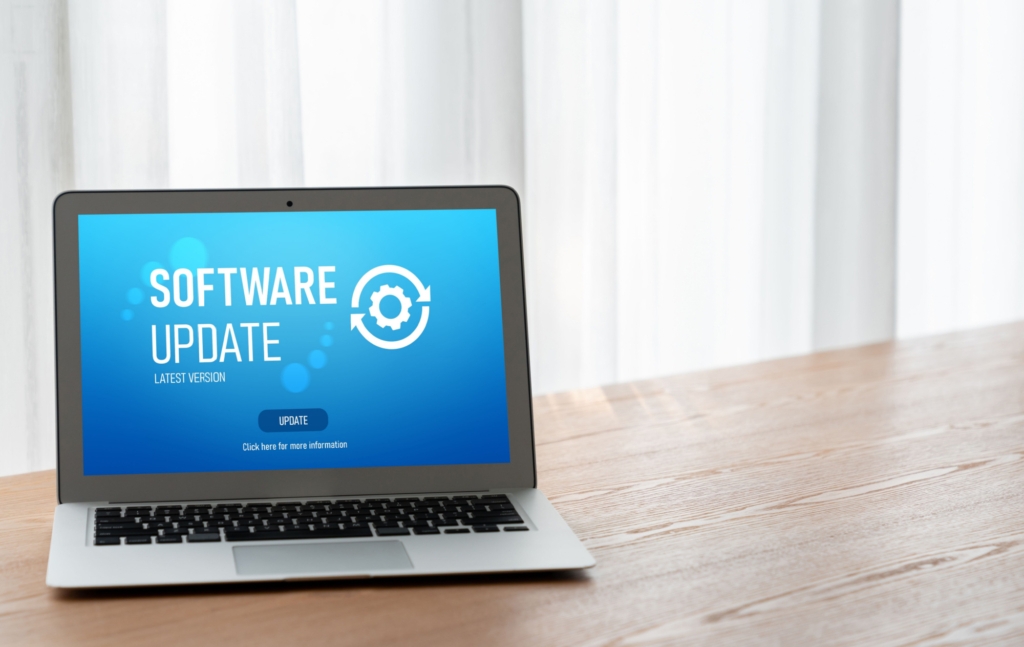We patch our favorite pants when we come across a spot that is vulnerable to rips and tears but that’s not the kind of patching we are talking about here. It is important that we run software updates, also known as patches, from the software vendors often and timely. But why? Let’s take a further look.
Estimated read time: 4 minutes

What are software patches?
Just like most products, continual upgrades, fixes and enhancements are needed to keep software products up-to-date and functioning as intended. Often times these updates are not just to fix an issue that has been discovered, known as a bug, but more so these updates are to provide an enhancement to the programs security features.
As hackers and cyber attackers (often bots and not actual humans) learn more and more each day to find ways to breach your computer’s security, the software developers continue to identify weak spots within the programing and create software patches to fix the vulnerabilities. These patches are sent to the end users to either update manually on the user’s device, or automatically depending on the user’s settings.
How do you know when you have an update to run?
Sometimes this can be as obvious as a pop up on your device telling you that an update is available for your software and other times you need to be a little bit more strategic with your update planning.
Check the developer’s website for recently pushed updates and patches. Often developers have a quick link or “recent updates” location on their website that notes any changes or updates to their software product. This is also where you can find information on End of Life (EOL) software programs. We will discuss that more below.
How often should you check and run updates?
The answer is it depends, but experts highly recommend at least once per month. Sometimes you won’t have an update to run and other times the developer will have pushed a couple of updates through. It all depends on the nature of the programming and its needs. there might be a “bug fix” patch and a new feature update. Or, there could just be a monthly maintenance update.
Not only should you check for updates for your computers but also for other electronic devices such as your smart phone, gaming systems, home security systems, etc. Anything that uses software will more than likely have an update at some point. Regular maintenance of these software products is what you want to see. If you have a product that hasn’t received an update in awhile, it is probably time to determine if that particular software has reached its end-of-life and a new replacement program needs to be installed.
Is there a time when software developers no longer provide updates to programs?
Yes, there is. It is referred to as end-of-life (EOL for short) software. When software reaches EOL, it means that the program will no longer be supported by the developer and there will be no more updates, patches and bug fixes. The risk with continuing to have software on your device that has reached EOL is that, without regular updates and bug fixes, the software becomes vulnerable to hackers and cybercriminals. It is best to replace EOL software with a new program to continue to keep your devices secure and prevent costly interruptions and downstream effects of infected software.
Things to watch out for when running software updates and patches:
- Carefully review the source of the update – You should validate that the patch or update you have received is valid and from the software developer directly. Sometimes hackers will create look alike updates which are actually malware software and, when installed, infect your computer with malicious software. If the update seems fishy, always check with the developer directly either by contacting them or by downloading the update directly from their secure website.
- Ensure that your files are backed up prior to running any updates or patches – in the event that the update causes problems on your device, you will have all of your important data backed up to be reinstalled on your device should you need it. Plus, it is a good habit to back up your data monthly anyway!
- Downtime and interruption – Most software updates can take a bit of time to install. Once you start the install process, you are not able to use the device until the update is done running. Be sure to plan your time accordingly and run updates during non-peak hours of the day.
- Not letting the update run fully – You should be careful to not interrupt the software update process once it has started. Turning your device off or exiting the software update while it is running could impact the updates effectiveness and could cause additional issues. It is best to let the update run completely and allow the device to restart on it’s own as part of the install process.
- Have a professional assist you – When it comes to hardware and device management for your organization or business, working with a professional to maintain regular updates is best. The professionals have the ability to handle vetting, removing and implementing updates on a much larger scale while also determining security gaps and providing recommendations for remedy.
If you ever are unsure of an update or have questions, it is best to contact the software developer directly to verify the update. The developer can also help troubleshoot should any problems arise during the update process.
Learn more about how Hamilton can assist your business IT needs.
Fill out the form below and one of our expert team members will be in contact with you very soon!
Feel free to call us directly at 308-381-1000.
Discover more about Hamilton Business Solutions here!






